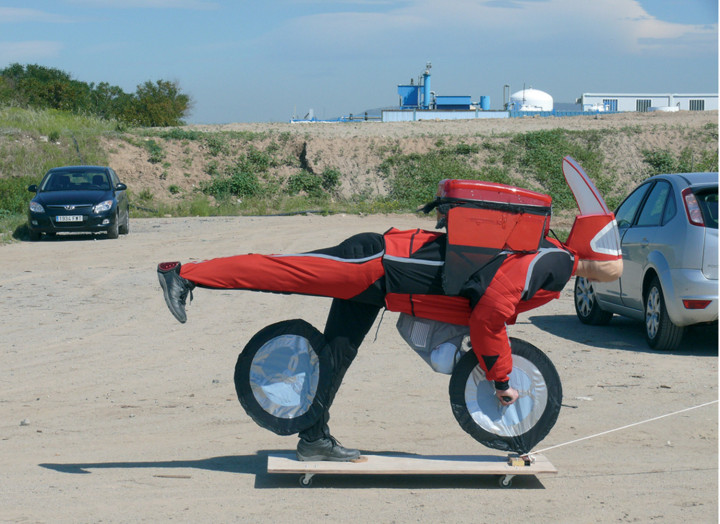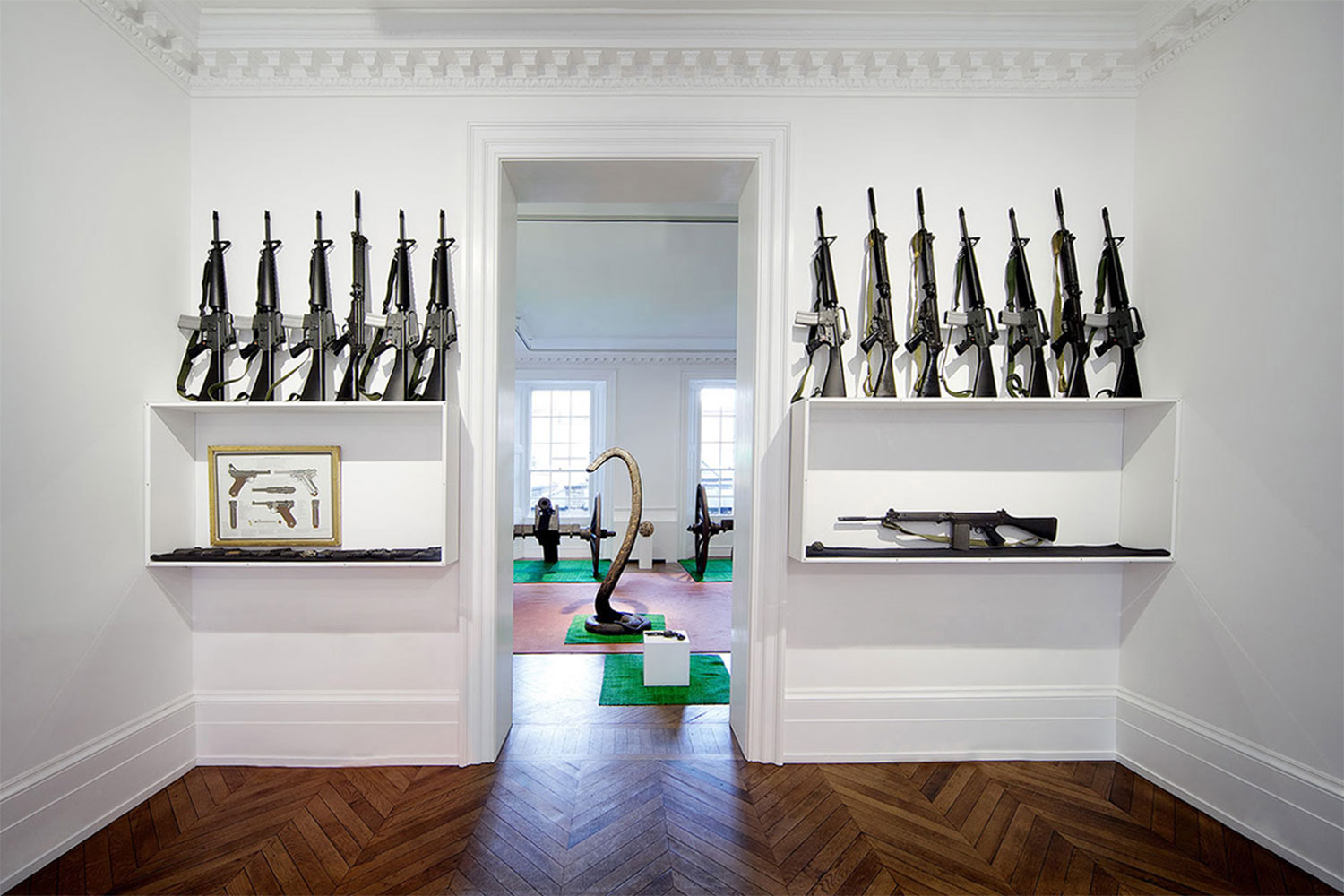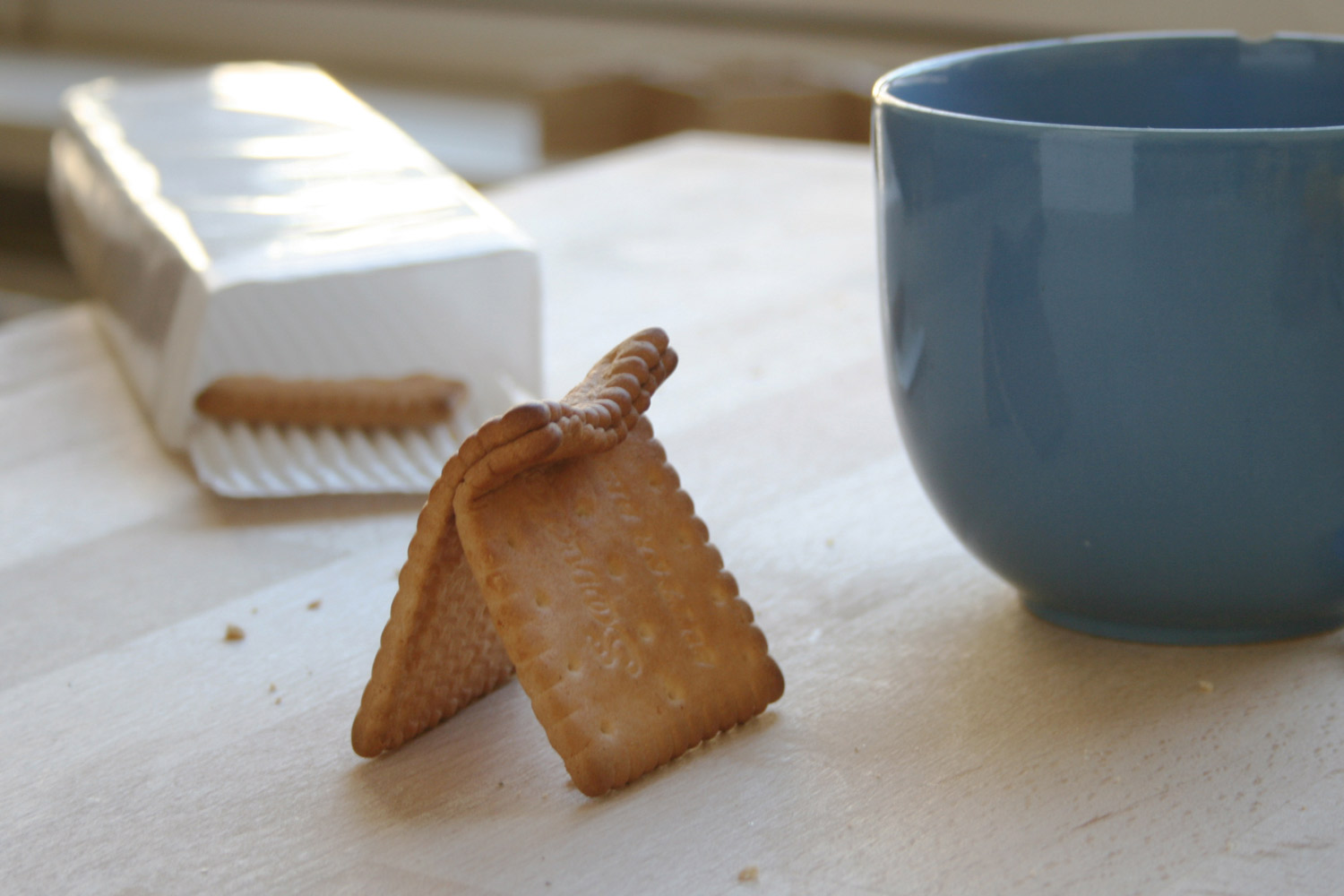
Committing an appreciation of the work of David Bestué and Marc Vives to writing feels initially like turning up to a party overdressed. There is a tone to the work that makes you reluctant to get too serious about it, which springs from the instinct that perhaps the artists wouldn’t either. However, there is also a zealousness to their performances that makes you want to dig a little deeper.
The young Spanish duo featured in this year’s Venice Biennale with two films, Actions at Home (2005) and Proteo (2009). Proteo is a two-screen projection that depicts the momentous theme of evolution through a potted cameo sequence, which sees the featured performer turn from animal, to man, to machine, in a matter of minutes. The second screen, presented in Venice in an adjoining room, witnesses a variation on the evolutionary chain, with man turning into animal, then into machine; this switch is perhaps academic as the looped films throw the character into a perpetual cycle of evolution and regression.
However, despite the narrative line, it feels disingenuous to qualify these three movements with such dogmatic symbolism. In reality, the representations of each ‘state of being’ and the transformations between them are realized like a layman’s pantomime, in such a manner that greets the gravitas of the theme with a gutsy defiance. The animal, like a product of an extravagant school play, is a figure draped in a black cloth with a makeshift horse head, which de-robes to transform into a human mannequin that jogs across the landscape. The costumes are inventive and elaborate, however not without niggling technical complications. As the human bends and fumbles to release his pop-out wheels and outstretch his back leg to elongate into the guise of a motorbike, soon to be dragged across the scene on a wooden trolley as if propelled by an engine, he does so with a spirited lack of grace.
The artists’ references include Leopoldo Fregoli, who was famed for wowing audiences with his ‘quick change’ stage performances in the late 19th century. Furthermore, the title of the film, Proteo, lifts from the Greek god Proteus, who continuously altered his state of being (pig, lion, serpent) in order not to be drawn into sharing his knowledge of the future. However, despite such illustrious allusions, Bestué and Vives’s slapstick hybrid appears to unashamedly embrace the material reality that it lacks both the panache of a Fregoli master show and the sublime characteristics of Proteus’s context.
Instead, set on an industrial coastline (cue sea-god Proteus) with a scrap heap, a car park and a factory all visible — feeling less like nominated symbols than happenstance elements of a setting large enough for the performance — Proteo becomes a makeshift theater piece that narrates its own circumstances as much its appointed subject. The performance shows a gallant awareness of its own shortcomings in tackling a theme that is as magnificently broad as the artists’ material possibilities are restrictive. In turn, Bestué and Vives’s measured dose of humor turns into a valuable lever for self-reflexivity. Bedded in a narrative that is seductively ambitious, perhaps the most intuitive lesson here is that there are funny ways to be serious.





